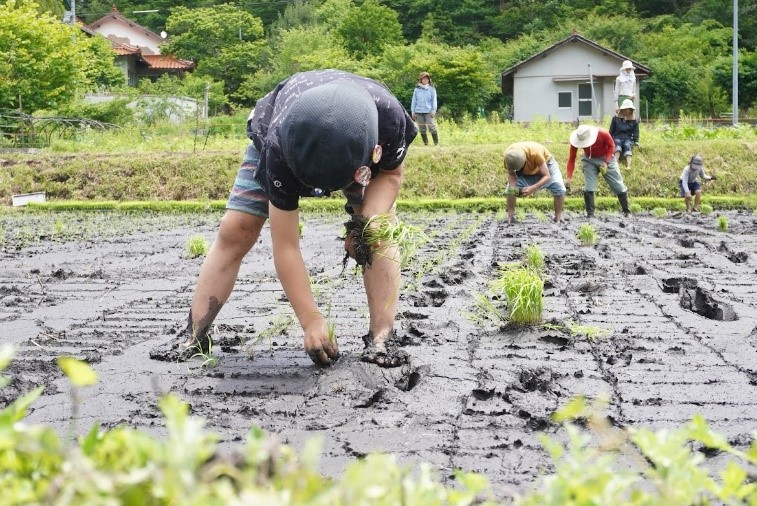News Release
Experiencing traditional rice planting
August 1, 2022
August 1, 2022
Experiencing traditional rice planting

After writing my last column about soil diagnosis, I went to visit my friend who plants organic rice in Shobara, located north-east of Hiroshima city. Shobara is one of the rice-producing areas renowned for preserving the traditional Japanese agrarian life which prominently features the cultivation of rice. The Japanese rice is mainly a short-grain variety biologically known as Japonica. It is grown by wet-rice cultivation system where the land is flooded with fresh water to about 5-10 centimeters high. Planting of rice seedlings is done in the spring season and harvested in the fall. Most of these processes are fully mechanized, and farmers are said to own a large number of agricultural machinery despite the small size of their operations.
All the same, I am curious to experience Japanese traditional way of planting rice, and this motivated me to visit Shobara. Upon arriving, I was taken to a place locally known as Kurashi-juku Ofuru meaning "living in second-hand lodge". Kurashi-juku is a residence and lodging facility that allows visitors to experience the traditional way of life. As I expected, there were no modern living utilities such as gas stoves at the residences, therefore, people make fire using firewood to cook with and boil water for a bath. For survival, families living in this setting feed themselves with rice grown in the old-fashioned way on a nearby field. To prepare these rice fields for planting, the cultivator uses a tractor and a tiller which can be borrowed from a neighboring rice farmer. When the soil is ready, both rice planting and harvesting is done with bare hands. It was planting season during my visit, so we planted. We planted the rice seedlings at equal distances from each other. Planting rice by hand was hard work. It was tiring to walk through the muddy soil while bending for most of the time.
When the work cannot be completed by our group, families will ask for assistance from neighbors and other volunteers. I learnt that in this area, they maintained a practice where people worked together to help each other's work. This group of people, or the community is called "yui" (tie) in Japanese. It is a very tight-knit community that encourages people to lend a helping hand and receive a helping hand back.
My experience planting in this primitive way was daunting yet exhilarating. Thanks to the mechanized milling solutions that has evolved with Satake, growing food has become much easier.
